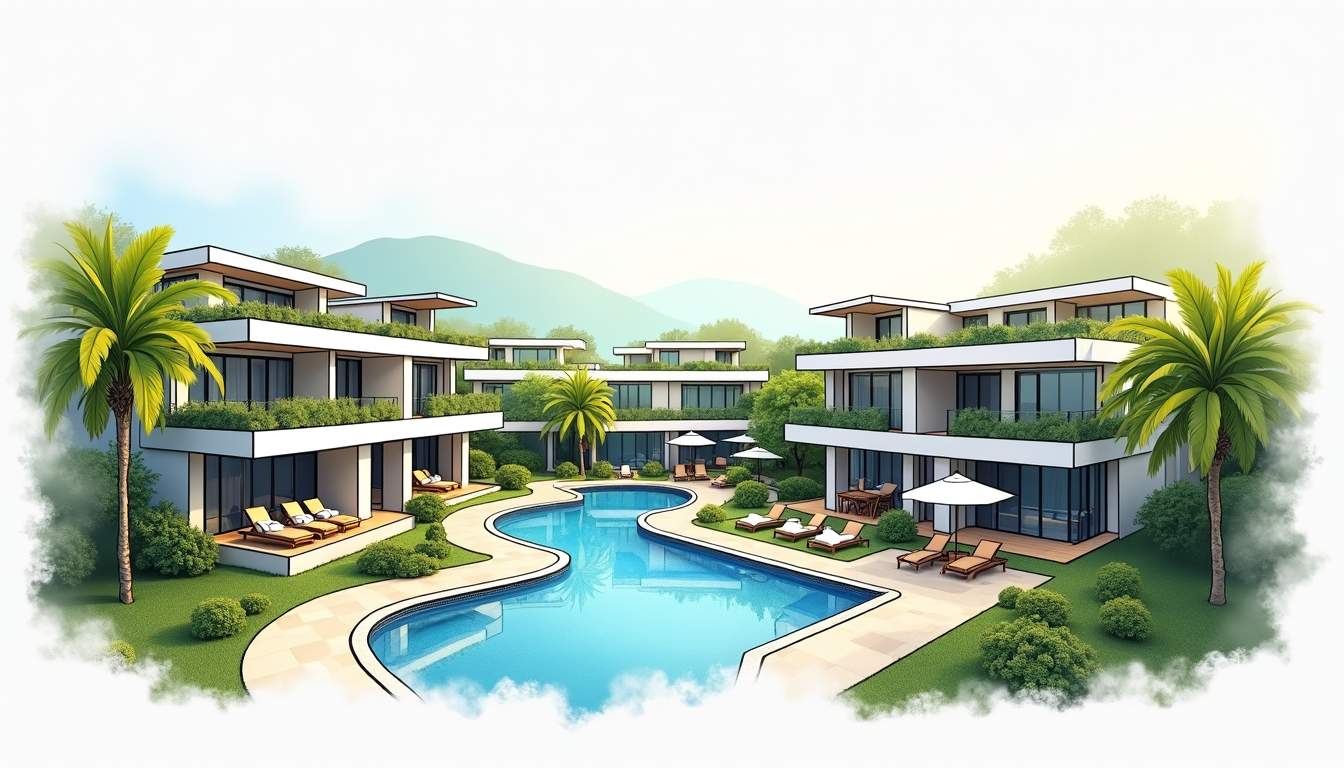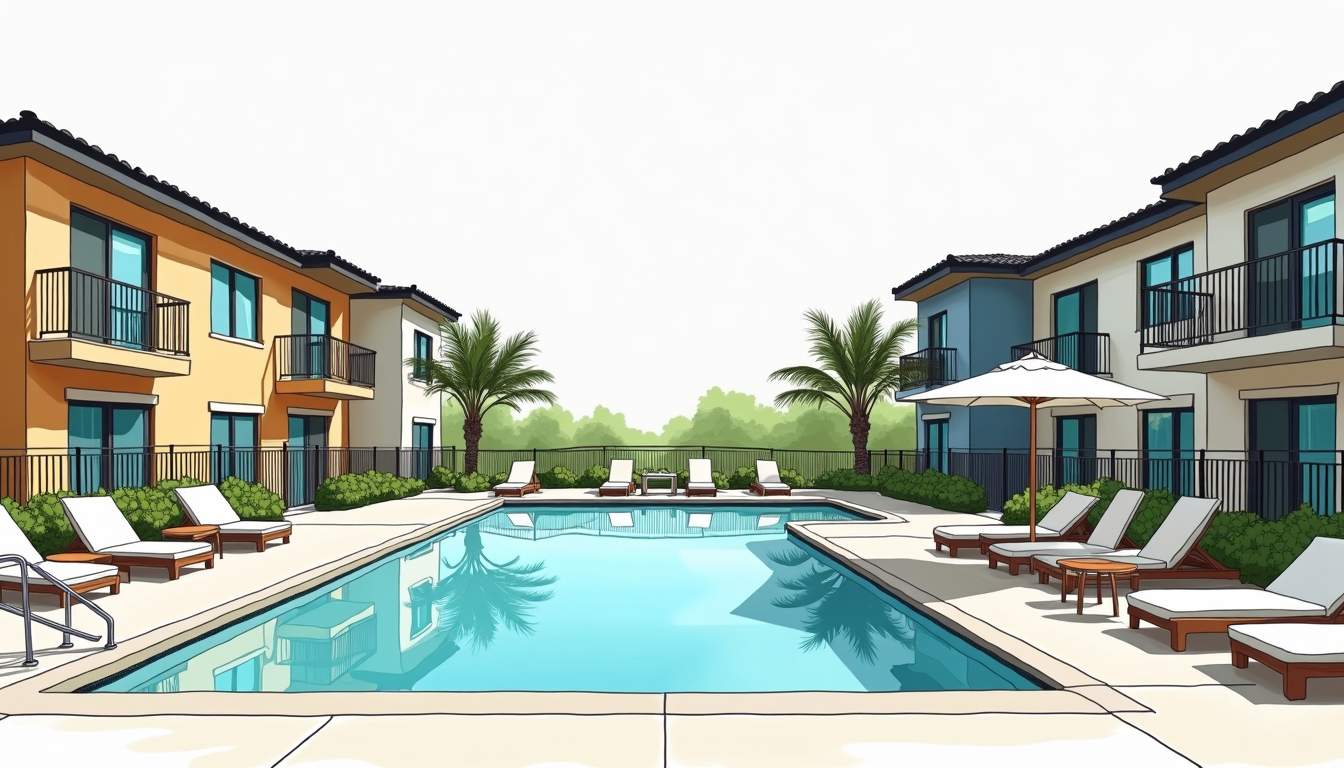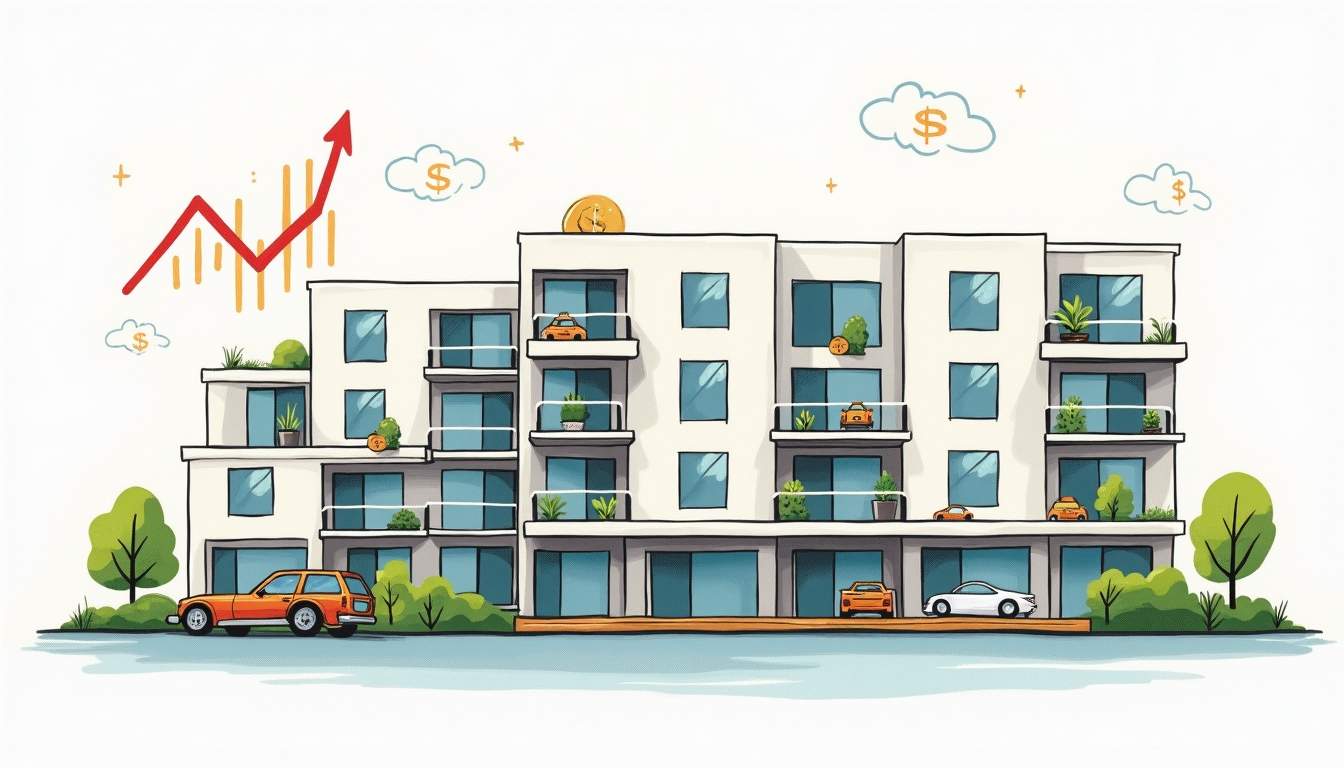
Resort-style residential developments have moved beyond vacation markets to become a mainstream asset class for investors seeking steady income, strong tenant demand, and differentiated properties. These developments combine lifestyle amenities with long-term housing needs, creating a niche that often outperforms traditional multifamily or single-family investments on occupancy, rent premiums, and tenant retention. This article breaks down why resort-style living is an attractive investment, how to evaluate opportunities, and what risks deserve attention before committing capital.
Resort-style properties offer a lifestyle proposition rather than just a place to sleep. Features like pools, fitness centers, co-working spaces, landscaped communal areas, and concierge-type services resonate with a wide range of demographics: young professionals valuing experiences, empty-nesters seeking low-maintenance comfort, and remote workers who want amenities that support both living and working. This broad demand base helps stabilize occupancy throughout economic cycles.

Location synergies amplify appeal. Resorts near natural attractions, waterfronts, or within commuter distance of employment hubs benefit from both leisure-driven rentals and long-term residents who appreciate access to urban amenities. When the physical setting complements the amenities, properties achieve higher perceived value and justify rent premiums relative to similar units lacking those offerings.
Additionally, the integration of technology enhances the resort-style living experience, with smart home features, app-based service requests, and seamless digital community engagement becoming standard expectations. This technological edge not only attracts tech-savvy renters and buyers but also streamlines property management, making it easier to maintain high service levels and responsiveness.
Equally important is the sense of community fostered in these developments. Regular social events, communal lounges, and shared recreational spaces encourage interaction among residents, supporting a vibrant social atmosphere that many find lacking in traditional residential settings. By promoting connection alongside convenience, resort-style living creates an appealing blend of privacy and engagement.
Several demographic trends favor resort-style investments: an aging population seeking accessible, amenity-rich living; millennials prioritizing experience and flexibility; and the rise of remote work enabling people to choose residences based on quality of life rather than exclusively on commute times. These shifts translate into sustained demand for properties that blur the line between home and hospitality.
Recent real estate cycles have shown resilient demand for high-amenity housing even when broader markets cool. Occupancy and rent growth for premium assets often outpace that of basic inventory because tenants prioritize comfort and convenience when budgets tighten. This phenomenon makes resort-style projects a defensive bet against rising vacancy pressures.
Capital flows are following tenants. Institutional investors, private equity funds, and REITs have increased exposure to lifestyle-oriented housing, driving development and modernization of portfolios. This capital influx improves property management practices and elevates product quality across the sector, which in turn raises market expectations for amenitized living spaces.
Additionally, demographic shifts are playing a crucial role in bolstering demand for resort-style living. Millennials and Gen Z renters increasingly seek environments that offer social engagement, wellness amenities, and flexible workspaces, while aging Baby Boomers desire accessible, service-rich housing options. These diverse but overlapping preferences create a broad and sustainable tenant base drawn to communities designed around lifestyle and experience.
Moreover, urbanization trends continue to drive growth in locations that support mixed-use developments with integrated retail, dining, and recreational options. This creates not only housing but vibrant neighborhoods that attract and retain residents, enhancing the long-term value proposition of resort-style properties within these markets.
Property technology—smart access, automated maintenance workflows, energy-efficient systems, and digital resident services—enhances the operational margins of resort-style communities. These efficiencies lower net operating expenses over time and improve resident satisfaction, both of which contribute to stronger financial performance and more predictable cash flows.
Advancements in data analytics and machine learning also allow property managers to anticipate maintenance issues proactively, personalize resident experiences, and optimize energy usage more effectively. By leveraging technology-driven insights, operators can enhance asset value while delivering innovative services that meet evolving tenant expectations. This integration of tech not only streamlines costs but strengthens brand loyalty, critical for sustaining demand in a competitive housing market.
Resort-style properties typically command rent premiums of 10–30% over conventional product in the same submarket, depending on amenity quality and uniqueness. Higher rents and lower turnover can produce attractive net operating income growth, which compounds returns when the property is held over several years. In markets with constrained new supply, existing resort-style assets also benefit from greater pricing power.
On the exit side, buyers often value lifestyle properties at higher capitalization rates compression compared to vanilla multifamily. The combination of robust cash flows, differentiated product, and strong tenant metrics can lead to outsized valuation multiples when selling to institutional or international buyers who prioritize stable, high-quality assets.
Using conservative leverage—often 55–70% loan-to-value depending on the sponsor and market—can amplify equity returns while maintaining downside protection. Additionally, tax structures like cost segregation, 1031 exchanges, and depreciation schedules often improve after-tax yields for investors in resort-style projects. Professional tax and legal advice should be sought to structure these benefits effectively.
No investment is without risk. Resort-style properties can be more sensitive to shifts in discretionary spending and tourism cycles in certain markets. High amenity counts also translate to greater maintenance and staffing costs, which can compress margins if not managed proactively. It’s important to stress-test underwriting models for prolonged downturns and holiday-season variations.
Mitigation strategies include diversifying tenant mix (mix short-term rentals with long-stay residents where local regulations allow), implementing scalable service models, and focusing on locations with multiple demand drivers—employment centers, healthcare hubs, universities, or natural attractions. Strong on-site management and preventive maintenance programs also limit surprise capital expenditures.
Short-term rental regulations, zoning changes, and amenity-related taxes can materially affect projected returns. Before acquisition, thorough due diligence on local ordinances, HOA covenants, and future development plans in the submarket is essential. Contingency reserves should be built into budgets to cover regulatory compliance costs or market-driven tweaks to amenity strategies.
Start with a rigorous market analysis. Assess supply pipelines, historical occupancy and rent trends, employment growth, and leisure demand indicators such as hotel performance and visitor statistics. Understand the trade area: who the typical renter or buyer is, what drives their housing decisions, and how price-sensitive they are to amenity enhancements.
Operational due diligence is equally important. Review historical financial statements, capital expenditure histories, resident turnover rates, and the cost structure for delivering amenities. Interview on-site managers and maintenance personnel to learn where service gaps or inefficiencies exist. Often, small operational improvements can unlock significant NOI upside.
Key factors to examine include: quality and uniqueness of amenities, unit mix and layout, structural condition, utility efficiency, parking and transportation access, and the brand or positioning of the development. Also confirm legal clarity around amenity access, mixed-use components, and any franchised or branded service agreements that could add value—or liabilities.
Consider two hypothetical, but realistic, scenarios. In the first, a redeveloped lakeside community replaces outdated common areas with co-working spaces, a wellness center, and upgraded waterfront amenities. The tenant base shifts toward professionals and remote workers, reducing turnover and enabling a 20% rent premium over nearby conventional buildings. Over five years, stabilized NOI increases by 40%, enabling a profitable disposition to a value-add buyer.

In the second scenario, a coastal resort-style complex relies heavily on short-term rentals. An unforeseen regulatory clampdown reduces short-term rental revenue by half. The sponsor mitigates losses by converting many units to longer-term leases and repurposing back-of-house spaces into revenue-generating services like storage and parking. While returns compress, the asset remains viable due to diversified demand and quick operational pivots.
Both cases demonstrate the importance of flexibility and local knowledge. When amenity-led differentiation is paired with strong operations and multiple demand drivers, resort-style assets tend to be resilient. Conversely, concentration in a single demand channel (e.g., tourist short-term rentals) increases vulnerability to regulatory shocks and cyclical downturns.
Investment horizons for resort-style properties typically range from 3 to 10 years, depending on the business plan. Shorter holds focus on operational fixes and rent re-pricing, while longer holds often involve phased repositioning, new amenity rollouts, or entitlement-driven expansions. The chosen exit strategy should align with market timing and sponsor expertise.

Potential exits include sale to institutional investors, REITs seeking stabilized, low-turnover assets, or private buyers looking for lifestyle portfolios. In some cases, value can be realized through partial dispositions or refinancing once the property achieves stabilization and lower perceived risk, unlocking capital for new investments.
Market cycles matter. Selling into a period of strong investor appetite for lifestyle assets will capture premium multiples, but waiting for full operational stabilization may generate more absolute return despite market fluctuations. A clear disposition trigger—based on NOI, occupancy, or multiple thresholds—helps avoid emotional timing decisions.
Resort-style living can be a compelling real estate play due to its lifestyle differentiation, rent premium potential, and broad demographic appeal. However, success depends on careful market selection, disciplined underwriting, operational excellence, and contingency planning for regulatory and cyclical risks. Investors should align with sponsors who possess local market expertise and a proven track record of delivering amenity-driven value.
Thorough due diligence that combines financial modeling with operational reality will separate opportunities that offer real upside from projects that merely look attractive on paper. When structured and managed correctly, resort-style investments provide a pathway to resilient cash flow and attractive long-term appreciation—an outcome that makes this niche an increasingly smart play in diversified real estate portfolios.
Ready to experience the lifestyle investment opportunity you've read about? Tennessee National combines luxury resort-style amenities with the warmth of a premier gated community in the heart of Tennessee. From a Greg Norman Signature Golf Course and private marina to waterfront dining and over 20 exclusive member amenities, our vibrant community offers everything you need for an elevated living experience. Whether you’re interested in a move-in ready home or a custom build, schedule a private tour today and start making memories daily at Tennessee National. Schedule a Private Tour.